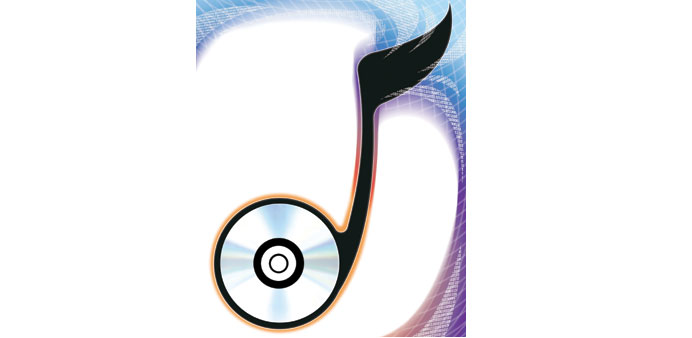By Heather Somerville
Silicon Valley is poised to upend the music industry — again. From Napster to Pandora, from the iPod to the iPhone, technology innovation has made music easier to find and cheaper to buy than ever before. At the same time, it has destabilised the music business and left artists — at least those not named Justin Bieber or Taylor Swift — fearing for their livelihoods.
In this latest music revolution, companies like Google, Apple and Facebook are eyeing the streaming and on-demand music business now dominated by smaller niche companies such as Pandora and Spotify. When they do — and most analysts agree it’s really just a matter of time — they could give nearly everyone the ability to listen to whatever they want, whenever they want, and mostly for free.
“There is no doubt that when companies this large enter into the field, it will be disruptive,” said Jonathan Handel, a media and entertainment attorney with the Southern California firm TroyGould.
The stakes are especially high for Apple, which transformed the music industry 10 years ago when it introduced iTunes. The digital store is still lucrative, owning 63% of the digital music market, but it is up against a new crop of music services that don’t require a credit card. The reluctance of consumers to pay 99 cents to download a music file could threaten iTunes’ dominance.
Apple could be close to striking a deal with major music labels to create “iRadio,” a streaming music service that Apple followers speculate will be similar to Pandora but with a larger selection and more on-demand features, such as the option to download songs as they play and unlimited song skipping.
Apple spokesman Tom Neumayr declined to comment on “rumour and speculation.” The company filed for a streaming music patent last year.
Google is also said to be working on a music-streaming service that would work on YouTube and could launch in the summer. Media reports say its plans include a free version with ads and an optional subscription fee for additional features.
Twitter has already entered the fray, releasing a music discovery and sharing service in April to its 500mn users.
Another Silicon Valley heavyweight may be next: “Facebook, we all know they’re next. Twitter just beat them to it,” said John Wright, founder of Speakerfy, an application that lets users synchronise music playing on multiple laptops or iPads.
As one Pandora representative put it, “everyone’s competing for ears and their time spent listening.”
The shift to free and unlimited streaming is also transforming the way consumers think about music.
“Music, just like the Internet, will be broadly available for everyone,” said Tommy Darker, a musician and marketing professional who has written about technology’s impact on music. As free access to music grows, the desire to own it fades, he said. Already, he said, “the majority have stopped buying.”
According to the NPD Group, just slightly more than one-third of consumers think it’s important to own music.
San Jose State University student Rosa Gonzalez said she has been using her free Spotify account to explore dubstep — percussion-heavy electronic dance music she says is good for studying. And she no longer has to pay for songs on iTunes.
As much as she likes Spotify, 19-year-old Gonzalez said she won’t pay $5 or $10 a month for one of the service’s ad-free accounts: “There are so many other ways to get free music.”
Only about one-quarter of Spotify users pay for an upgraded version, while the rest stick with the free streaming, according to Spotify. And a fraction of Pandora users opt to pay $4 per month for the ad-free version.
“That’s been a big theme among younger consumers — they’re either unwilling to pay or they have tight budgets,” said Russ Crupnick, senior vice-president of industry analysis at the NPD Group.
Even iPods have been squeezed out, with shipments down to 5.6mn from 7.6mn a year.
“It’s not iPods anymore; it’s phones,” Handel said.
But other music fans said they would continue to buy albums because streaming services don’t always offer music from older, independent and obscure artists.
“I still love buying music. It’s our way of building our individual collection at home,” said James Matlack, a dedicated Metallica fan.
For others, buying music is wrapped up in tradition. Jaymie Long, a secretary at Carden Day School of San Jose, said she still browses music stores: “It’s been a part of my childhood.”
More and more, though, music purchasers are the outliers, putting into question what, if anything, artists can charge for their work. Some say Internet music services help them reach new fans who would otherwise never buy a concert ticket, and social platforms like Twitter Music can help them promote new songs.
“Those services provide exposure,” Darker said.
But making money off these platforms is a challenge for artists. Streaming services say they pay huge royalty fees — up to 70% of their revenue — but most of the cash stays with record labels. Some independent musicians say they find their music on Spotify or another music player but never see a dime.
“I’m very curious to see how folks are making money from music streaming,” said Scott McDowell, a recording engineer in San Francisco. “So far, I haven’t met anyone who is.”
By giving listeners unlimited access to free music, Handel said streaming and on-demand services have created the perception that an artist’s work isn’t worth paying for; that the culmination of creative energies and talent perfected over years of practice isn’t worth 99 cents. And for a musician, that might be the most painful blow delivered by the next digital music revolution. — San Jose Mercury News/MCT



